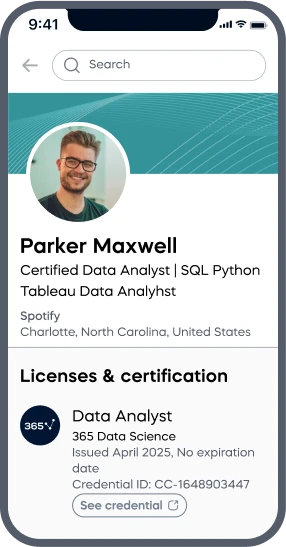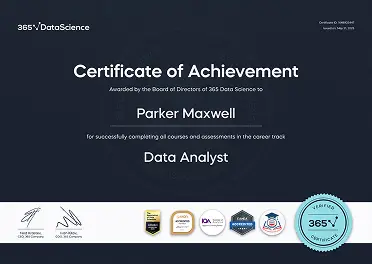Siddhant G.
See all reviews
Become proficient in SQL and manage relational databases with confidence






Skill level:
Duration:
CPE credits:
Accredited

Bringing real-world expertise from leading global companies
Master's degree, Economic and Social Sciences

Bringing real-world expertise from leading global companies
Master's degree, Computer Engineering
Description
Curriculum
Free lessons

1.1 Welcome to SQL
4 min

1.2 Why SQL?
3 min

1.4 Why MySQL?
2 min

1.6 Introduction to databases
5 min

2.1 SQL as a declarative language
2 min

2.2 Data definition language (DDL)
4 min
96%
of our students recommend
94%
of AI and data science graduates
successfully change
$29,000
average salary increase
ACCREDITED certificates
Craft a resume and LinkedIn profile you’re proud of—featuring certificates recognized by leading global
institutions.
Earn CPE-accredited credentials that showcase your dedication, growth, and essential skills—the qualities
employers value most.





Certificates are included with the Self-Study learning plan.


How it WORKS